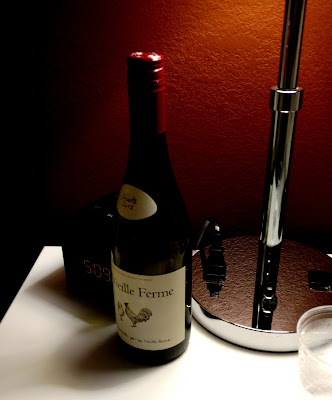Leave home the flammable chemicals, make sure your passport is current, and you should be fine.
| I like Panel-Pak carriers but usually run short of slots on a long trip. |
Most problems with painting in other countries are due to flight regulations, not your destination. I haven’t had a problem flying with my paints since the early days after 9/11, but they are in a clearly-labeled clear-plastic bag.
Do not bring large tubes of oil paints in your carry-on luggage; they exceed the 3 oz. rule. It is not necessary to empty your pochade box if it still has useful paint on it; paint is no more volatile on the palette than it is in a tube.
According to the FAA, nonflammable paints are those with a flashpoint above 140° F (60° C). Linseed oil has a flashpoint above 550°F. This information is found on the product’s material safety data sheet (MSDS). The flash point is in section 9 of the MSDS. Section 14 indicates if the product is regulated for transportation. Here is a PDF for Gamblin Oil Colors’ general artist oil colors sheet.
 |
| My paints are in a clear plastic bag with a label written by Lori Putnam, which I print from the Gamblin website. |
Gamsol has a flash point of 144° F, which makes it theoretically transportable by plane, but I’ve never done it. The FAA itself says “paint thinners, turpentine, and brush cleaners are flammable liquids and may not be carried in carry-on or checked baggage.” Odorless mineral spirits (called ‘white spirits’ in some countries) are cheap and easy to buy in any art store. One quart lasts me two weeks.
Don’t plan on bringing medium, either. Most of them have naphtha added as a drying agent. This is a volatile petroleum solvent, more powerful than mineral spirits, and it has a low flash point. It appears across a wide range of pre-mixed mediums including alkyl gels (such as Galkyd) and the Grumbacher mediums that I prefer.
| Don’t forget the rain gear, especially in Scotland. |
Your choices are to buy a small bottle at your destination, paint without medium, or use a traditional drying oil like linseed oil. If you choose to do the latter, remember that it will dry more slowly. Plan accordingly to carry your wet canvases home.
I use PanelPak wet canvas carriers, but there are times (like this morning) when I have more wet canvases than slots. If paintings are almost dry and have little impasto, interleaving them with wax paper will get them home safely. If you have a mess of wet canvases, you may need to improvise. Your goal is to create a space between the canvas boards. The easiest way is to cut cardboard or plastic spacers. Once the strips and the boards are in a stable pile, I tape or tie the whole mess together. Carry the gooiest ones, or the ones you like best, in your carrier.
 |
| Interleaved wax paper can stop almost-dry paintings from sticking to each other. |
Americans already live in the world’s largest art market, so traveling to other countries to work doesn’t make a lot of sense. Still, it sometimes happens. You may need a work visa. This is a laborious process. Ask the organizer of your event for documentation.
Our State Department maintains a list of travel advisories for foreign destinations. These include additional-vaccination suggestions. Some foreign destinations require visas. Others require that you have at least six months left on a passport. You should check with your health insurance provider about whether you’re covered abroad, and with your auto insurance provider about whether your policy covers an international rental car.
| But for gooey paintings, you’re going to need to improvise some kind of spacer strip. |
You will need power adapters for most foreign destinations. I find a USB power bank very useful for long plane trips. And I just smile and pay the $10 a day fee to use my cell phone overseas; without that, you wouldn’t be reading this blog this morning.
Here is my personal packing list, and here are supply lists for oils, watercolor, and acrylicsupplies. I print the relevant ones every time I pack and use them as a checklist.




